Archive for category Television
Jellystone has the stones; The Owl House still struggles to come home to roost
Posted by kjohnson1585 in Animation, Television, Uncategorized, Writing on August 13, 2021
(I’m still trying to figure out how to make titles work for these pieces.)
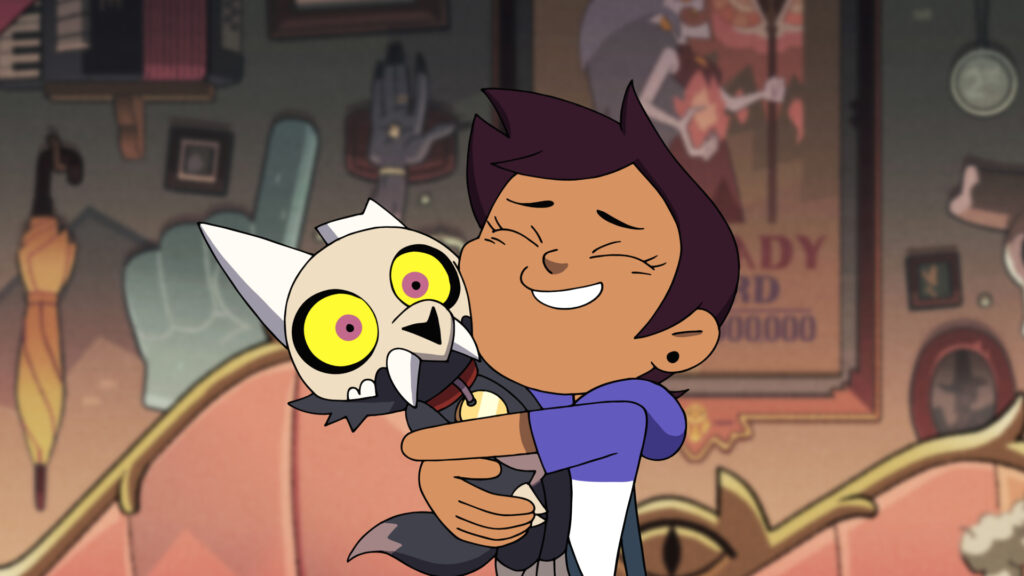
So I have a question about The Owl House. Was there an episode that, straight up, explained what the main nine witch covens actually are? I did some down-and-dirty research, and a wiki pointed out that the nine were mentioned in an episode call “Covention”. I re-watched “Covention”. They did not mention all nine covens. They mentioned one of the nine covens was “Construction,” which is structured around gaining magical strength, which is also an important plot point of the episode, but I don’t think the gaining of magical stretch is ever brought up again in the entire show. Which is weird, especially towards the end of season one where the magical fights escalate in stakes; no one bothers to use power-gaining to escalate in strength.
When The Owl House was first announced, I was quite looking forward to watching it. It had a really cool, nutty locale and the characters seemed fun and appealing. And don’t get me wrong, The Owl House is quite a fun show, but it also feels… well, perhaps not troubled, but restrained? Unsure of itself? There’s a pretty controversial piece of news about the show (which is subject to change I suppose): after this current second season, The Owl House will have one final third season, consisting of three episodes at about an hour and a half each. Even if you think Disney hates the show (which I don’t think they do, and in the next paragraph I’ll elaborate), this kind of decision is weird and unprecedented. It has the flavors of Netflix’s recent push to end some of its animated shows with movies instead of final seasons (Trollhunters, Hilda), but you can chalk that up to Netflix’s push for more affordable, quick content for weekly, new releases than whole-ass seasons. (They sort of did this with Unbreakable Kimmy Schmidt, and not for nothing, but Arlo The Alligator Boy, a fine movie as is, probably would have worked better across ten episodes.)
I think there’s a lot going on with Disney, partially in relation to Disney+. I suspect, spitballing here, that the mandate to find “the next Gravity Falls” got usurped by the push for Disney+ content, and the pandemic sort of solidified that “Disney+ at all costs” notion. A lot of Twitter seem to think its due to a same-sex dating subplot (and I can’t dismiss that out of hand, as many shows have gotten royally screwed when same-sex narratives pop up), but my inclination is that the ratings, business realities, and poor timing left The Owl House on the chopping block. (I have a theory. If the most social media appeal of your show is a “ship,” your show actually on pretty shaky ground.)
The reason I asked about the nine covens at the beginning of this piece is because I feel like knowing what the nine covens are, and who leads them, and how, specifically, they work within the society of the Boiling Isles, would be pretty important to Luz, and The Owl House as a whole. I get that the show is structured from Luz’s point of view, but as an aspiring witch, knowing what those covens are should be a day one question from her (and I get that she’s not supposed to be a great student but still). This ought to be a pretty clear point that show reveals, to flavor the world better, but to also provide the audience some kind of through-line of the world itself. In “Eda’s Requiem,” we finally see the Bard Coven in action, way late in season two. That seems really late, too me.
(I’ve written before about Anne’s weird season one lack of desire to understand the world of Amphibia, and I feel like Luz and The Owl House come from the same place: an incomplete, unfinished understanding of the world each show has created. Same for Star Vs. The Forces of Evil. Something about the way these shows deal with magic is wild if you think about it. It’s simultaneously overly complex and weirdly simple. What makes those nine covens the main ones versus the others? When Star decided to “end all magic,” why was there so little pushback? I wrote about how strange it is that a telethapy-esque spell took several episodes to set up in The Dragon Prince. Magic used to be portrayed in clear, simple terms (point fingers or wands, say some nonsense, strain oneself a bit, flashing lights!). Sometimes you had to find objects or talismans or horcruxes or runes or “places imbued with special powers”. There’s so much going on with magic in these shows now that it’s bordering on distracting; I feel more and more like I have to understand the depth of these spells to understand the depth of these characters nowadays. I partially have the same feeling for Centaurworld, which I will tackle next week.)
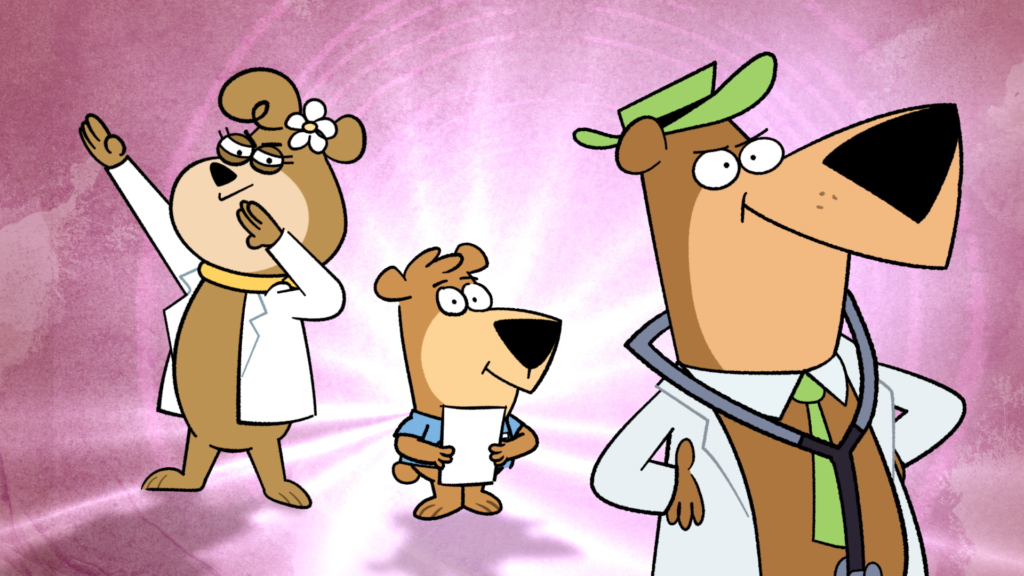
Jellystone, otherwise, is fantastic, and it helps that C. H. Greenblatt is an extremely talented creator, and that the back roster of the sillier Hanna-Barbera cartoons are sketched so thinly that all the new, updated creative choices for these characters work so well. I had my doubts that making Yogi, Cindy, and Boo-Boo doctors/nurses was a good idea, but the core nature of these characters never changed: Yogi is still darkly gluttonous, Boo-Boo is reluctantly submissive, and Cindy… well, Cindy was more the straight-bear of reason; here, she can go toe-to-toe with Yogi on the absurd escalation scale. Greenblatt needed to situation these characters in occupations or locales to give them a broad purpose; the medical field is probably the simplest to utilize, since policing is persona non grata right now, and being a lawyer is probably to complicated to work with in a kids’ show (also its connection to policing).
Many people tend to say Jellystone has a lot of Chowder-type humor, Greenblatt’s first show, but I don’t think that’s true. The two shows have aesthetic similarities for sure, but Chowder was a bit more surreal, I think, and as much as I love that show, you can kind of tell by late in its run it was losing a bit of steam. The world of Chowder was well-drawn but rather limited: you can only do so much with a not-bright, gluttonous kid and his self-absorbed mentor, with an assortment of other weirdo characters to pad things out. Jellystone has a much richer world and character-base to pull from–Hanna-Barbara’s library is rich and varied, and Jellystone has only light touched what it can do with it. Greenblatt and his creative team can make some serious comic moves here (I already thought of two whole potential specs).
More well-known characters like Wally Gator and Snagglepuss, while present, are mere side characters to Jellystone’s heavy hitters like Shag, Augie/Daddy Doggy, and Captain Caveman, who you’d think would have been placed along side the more human characters (more or less used as random shopkeepers and store employees). Loopy gets some choice lines, and I don’t even remember her (well, his) older cartoons ever airing! Top Cat and his crew make splashes, and even the Banana Splits pop up as heavy hitters. Jellystone knows that it has some freedom to re-tool a batch of characters that didn’t exactly hold up well (in the fact that probably seventy percent of these Hanna-Barbera characters have been forgotten by most people). So just the idea that we could see some deep cut characters pop up and steal the show already provides Greenblatt with swaths of material that he lacked in both Chowder and Harvey Beaks.
I’ll probably dabble with the end of The Bad Batch next week, along with a few words about Centaurworld, because I have some stuff to say about that show.
Back to Writing! The Mighty Ones and Monsters At Work
Posted by kjohnson1585 in Animation, Television, Uncategorized, Writing on August 6, 2021
Well, perhaps not a new me. But a new world? Absolutely.
It’s been a while since I’ve even touched this site. To say I’ve been incredibly busy is an understatement. I managed to acquire two actual, genuine writing gigs for animated shows (and always looking for more!), but as the COVID pandemic swept–and continues to sweep–across the nation, my attention had been primarily focused on more visual arts. I’d dabbled in Resolve, After Effects, Unity, and Blender. I did more exercise. I wrote a bit more for The AVClub and Den of Geek. I’ve certainly kept busy, but most of my time has been focused on keeping healthy. This pandemic, as been mentioned several times on social media, has been hell for mental health: trauma, paranoia, ignorance, fear, and outright hostility has become the norm. So, it’s been nigh impossible to really… “get” into a mindset that’s feels appropriate to think about, and write about, cartoons and animation.
This isn’t to say that I haven’t been watching them, though. In fact, I’ve been watching a ton of them, partly because I have to, partly as a means to keep up with the sheer number of new animated shows that’s been dropping on Netflix, Hulu, Nick, Disney, CN, and HBO Max. It’s an onslaught, and for the most part, nothing has been terrible, but I have yet to truly apply any of the robust analytical thinking I used to towards them. I want to get back to that. I want to return to those deep dives, those off-kilter, academic rambles that made this blog a “bit” popular at its small but notable peak. There’s certainly a lot to discuss, and over the next few weeks (months?) I’m hoping to play a little catch up with all the shows I’ve seen.
The plan, as of now, is to present a more informal blog/journal where I mostly talk about the thoughts I have about the cartoons I’m watching. While I’ll still be a bit analytical and all, I think this will best be handle with more of a casual flair, to get my writing juices flowing again, to see if I can foster some non-angry discussion about what’s on the air these days. There’s not gonna be any rhyme or reason to what I talk about, at least for the first couple of weeks: I’m gonna let whatever animated show I feel like discussing flow through my brain and vomit onto the page.
So, let’s just get to it.
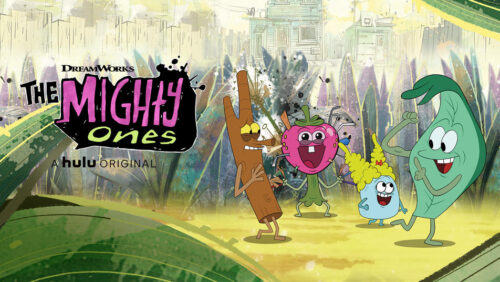
The Mighty Ones is dumb. I mean this as a compliment. The show stars four moronic talking, anthropomorphic objects in nature (a rock, a leaf, a twig, and a berry) fumbling about in a yard own by three women who are equally, if not more so, moronic. Stupidity thrives on this show, the dumbness and confusion structured to maximize laughs and cringe, tinged with the kind of weird and absurd energy that thrived in many post-Spongebob cartoons in the late 2000s, early 2010s. In the very first episode, Rocksy, Twig, Leaf, and Berry don’t know what a “game” is. Later, they talk about, and play, all the dumb games they randomly make up. (Continuity is not a thing here.) It’s cutely funny at times, although the idiocy of the first season can be overwhelming, with an energy that posits throwing as much dumbness at the wall and seeing what sticks. This doesn’t quite make for a binge-able show, but watching one or two episodes at a time is workable. More specifically, it seems to me that the show struggled the most with Leaf. He’s Twig’s brother, but aside from a early benevolent moment in the first season, he treats Twig like shit and mostly plays an arrogant prick. He’s mean, but not really in a funny way. His actions and behavior isolates him from the cast, making him unable to establish a comical rapport among the characters; instead of being a sour, self-centered character communicating with everyone else within the show’s rhythms, Leaf mostly was the guy who couldn’t grasp “Yes and…” and ruined a lot of comic momentum.
So didn’t really surprise me to notice Leaf being mostly absent in season two, which also had the added benefit of bringing in more outside characters into the mix (Leaf–in addition to calming him down a bit, making him a bit more pathetic, and having him speak more comic asides–mostly spends a lot of time gone or in the background.) The Mighty Ones isn’t a particularly deep show, but the sparse, barely populated feel of the yard felt limited, where the idiocy was a function of pure, isolated boredom–just something to do. Season two feels… well, not “purposeful,” but “fuller,” where the four main characters and their actions now can function in something that could plausibly be defined as “a world”. It pushes a comic energy where the dumbness had more to work with, a dumbness in a dumb world, where everyone now competes for… I guess, maximum dumbness. This also has the darkly-relating result of a more fatalist season; characters are placed in absolute harm’s way. The first season was dumb in a silly way; season two very notably has its moronic characters damn near die or killed. Leaf wastes away to barely nothing, Twig is skinned and chewed on repeatedly, and Berry falls in love with a crow that viscously peaks and eats at her fruity, gushy head. The last episode has the crew swallowed by a snake, and… living within the belly, I suppose. With the dark energy of a final episode, they way goodbye to their friends from within the eye of the snake that swallowed them as the snake slithers off into the distance. The Mighty Ones is a tricky show to wrap around; towards the end, I found myself more enjoying the three dim-witted homeowners who thrive in an entirely warped reality that ended up being hilarious. I don’t want to dismiss the antics of the main cast though, even if the show overall never quite snapped into place, which, to be fair, seemed to be the point.
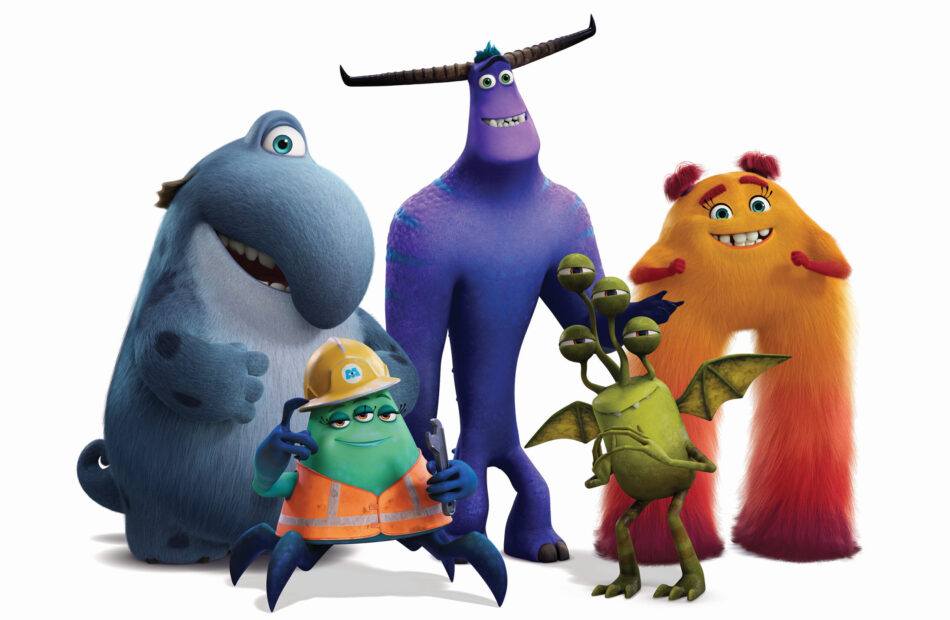
As much as I’d like to discuss more cartoons further, I think I’ll end on a few words on the Disney+ animated show Monsters At Work. A friend of mine once remarked that Pixar films are incredible, amazing films that are best watched once; while I don’t think I’d subscribe to that sentiment full tilt, I do understand that it sort of represents a kind of limitation to the Pixar formula. It seems to have reached its limit with Soul and the assortment of weaker, clumsier sequels churned out by the studio recently; now, imagine that formula chopped up, squeezed, and broken down into 25-minute chunks, and you’d have Pixar’s first foray into animated television.
Again, Monsters At Work isn’t bad. In fact, it’s past three episodes have been a step up from its first three, as the cast starts to feel more interactive with each other, and, more crucially, the lead monster takes on a more active role. The first three episodes mostly has Tyler being a bit clumsy but mostly brushing aside his new coworkers as said coworkers cluelessly quip and praise each other around them. It struggled to work because no one was actually talking to each other? Tyler kept saying specific things that no one would respond to, making the show a bit frustrating watch. There was no interplay among the characters. It also put a bit more emphasis on Mike and Sully who are clearly phoning it in (Goodman more so than Crystal, but both of them really sound like they’re doing their VO work while lying in bed).
But when “The Big Wazowskis” comes around, a shift notably occurs. Tyler takes a more active, if sitcom-lazy, role, which really showcases how pathetic and (slightly) self-absorbed he is. Admittedly, if he started off like that, I could see that leaving a bad taste in viewers mouths, but at the very least Tyler now has a personality that’s more than “knocked-around”. In a desperate attempt to nab Mike’s attention, Tyler distracts his irritating coworkers and their bowling desires and brings in a much better group of bowlers. It’s pretty funny to watch Tyler’s flop-sweat work at a more active level than passive, which also allows for a tad bit more poignancy to the events when he’s caught. “The Cover Up” is even funnier, where Tyler is directly pitted up “against” Duncan (the conflict is one-sided, in that Duncan’s hostility towards Tyler is never reciprocated) but still are often forced to work together to solve problems that they cause. In this episode, there’s a tinge of American Dad nuttiness, where an inspector arrives to shut them down, but Tyler and Duncan knock him out, then try to get rid of the body. Monsters At Work still has issues, mostly stemming from the core premise–monsters working to make children laugh via a bureaucratic infrastructure that recently switched from scares has too many open-ended questions (Why aren’t adult laughs as effective? What does a society driven on scare/laugh power look like? Are there other organizations that do this?) that makes a unstable foundation. But a sillier, more flippant narrative to everything could help. And honestly? They should drop Sully and Mike if they continue to be so lackluster, especially the “Mike’s Comedy Class” bit.
Next week I’m going to share my thoughts on Jellystone and The Owl House I think! We shall see. But thanks for checking back into this blog, and I do hope to continue this for the next couple of weeks!
The Call For Adventure is Too Loud
Posted by kjohnson1585 in Animation, Television, Uncategorized, Writing on July 30, 2019
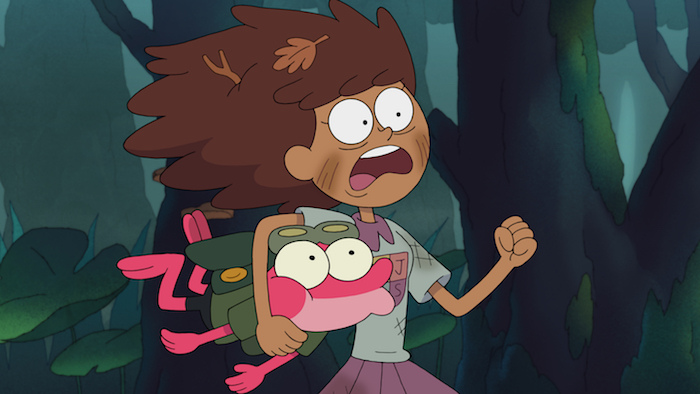
Disney’s new animated show, Amphibia, is weirdly inconsistent. It feels like an amalgamation of a lot of other popular cartoons: it has Adventure Time’s idyllic-but-dangerous-beneath-the-surface world-building; it has Gravity Falls’ dark, understated secrets from characters and locations alike; it has Steven Universe’s sense of gradual, revelatory pacing. It suddenly will burst into Spongebob Squarepants levels of absurd silliness, or utilize a children storybook-like essence akin to the late, underrated Harvey Beaks. Amphibia wants to be a lot of things other than itself, and while it is possible for an animated show to explore an assortment of thematic ideas, styles, and genres, Amphibia struggles because its premise–a young girl finds herself magically transported into a world of frogs–never congeals into something specific. In other words, if you randomly caught an episode, you probably would never guess that Anne even wants to go home.
Amphibia’s weird inconsistency creates a number of issues (since there’s no wifi, Anne just must have a shitload of TV shows on her phone), but one concern I mentioned over on Twitter is that she doesn’t possess a real drive to get home, nor seems to want to figure out any information on how she got to this frog-filled world, nor desires to find out what this frog-filled world is all about. When she, Hop Pop, Sprig, and Polly (the latter three being the frog family she’s currently living with) head to The Archives to do research, finally, she absolutely dreads it. Instead, her attention turns to Sprig’s idea, who gleefully, excitedly wants to go off onto “an adventure”. This adventure, whatever it may be, is purposeless. It’s just more exciting than boring ol’ reading. Sprig’s desire to go off into a random, dangerous adventure is so strong that he literally sabotages The Archives itself, trapping everyone inside it, so they are forced to figure out how to escape. Even in the nutty, anything-goes vibe of the show, this is a pretty messed up thing to do. But it’s also a good example of an overall trend in cartoons these days: just finding adventure for the sake of it has become overused, a somewhat lazy replacement over actually creating a plot or goal through which adventures should occur.
I tweeted about this while watching the new CN cartoon Mao Mao: Heroes of Pure Heart, about a stylized, chibi-esque, heroic cat who wants to become a legend among his already legendary family of heroes. (The tweet got a bit of pushback, which prompted me to clarify myself here.) Mao Mao wants to prove himself. To achieve this goal, he needs adventures. He values those adventures. He even has list of four elements every adventure must have to even be considered an adventure. His need for said adventures fit his personality, an oversized ego of speed and power, a modern-day Darkwing Duck, who wants to live up to his family’s legacy. I can’t say the same for Adorabat, the soft-voiced, ambitious sidekick who cries for the need for adventure… because she’s bored? She wants to train under Mao Mao, but for no specific reason other than it looks cool and she can be awesome, and, like Sprig, she also conjures up a nonsensical, unstable situation so she can force an adventure on her mentor during a moment of self-doubt.
Characters “wanting to go on an adventure” or “learning to be an adventurer,” whatever that even means, solves a lot of narrative problems. It sounds concrete enough to be a strong character motivator, but just vague enough to allow for almost limitless number of situations to structure an episode around. It’s also silly enough to allow writers to open up a lot of winking, self-aware jokes about adventuring in general. Sprig’s desire for adventure is, as quoted: “Wouldn’t we be better off preparing [for adventure] by diving headfirst into deadly situations?”. Mao Mao’s list of things every adventure must have is also a good example. And DuckTales contains so many episodes that were “about adventuring” that it arguably hurt the first half of its first season. Dewey’s desire to be an adventurer like his uncle Scrooge is, if you think about it, meaningless; far more interesting is Dewey’s desire to connect with Scrooge on a deeper, more emotional level through adventuring, which ended up being better handled with the search for his mother instead.
This all raises a question: what does “wanting to go on an adventure” even mean? It’s nebulous, non-specific, and open-ended. It feels character-defining, and in a way, a total, direct commitment to that concept could indeed be character-defining (Mao Mao’s thirst for adventure is based on that need to be accepted among his ancestors). Most of the times though, it’s not (Sprig and Adorabat only seems to want to do it cause they’re bored), and even with the cases that combine “desires for adventure” with “thrill-seeking personality” or “need to live up to legacies,” creators often downplay the depth of personality needed to sell that desire and instead overplay the comedic, winking, throwaway aspects of wanting those adventures. Mao Mao and OK KO both are literally structured as worlds defined by adventures around every corner; just existing in them means you will find yourself in danger everywhere you go. DuckTales is a bit more narrow, in that only members of the over-extended Duck family are constantly “trapped” in these adventurous situations, but considering the show is about them, any other consideration is rendered moot.
The self-aware desire for adventure has another inherent issue. In the tweet thread I made, I mentioned that it “killed the stakes,” which was meant to be tongue-in-cheek, but I do regret saying it in that way. What I meant was more that it removes the weight of life-or-death stakes when characters shrug off, or welcome, any threat that they could die from. And look, I am very much aware that very few, if any, cartoons will actually kill off its main characters, or even its secondary characters. In that way, being self-aware about characters wanting to rush blindly into adventure is hedging your bets; since you can’t really harm your characters, you might as well make fun of the fact you can’t harm them (Amphibia, specifically, hedged its bets early by dropping a lot of gags about characters literally dying or being killed, something that’s usually taboo among kids shows). Characters getting into dangerous scrapes but ultimately escaping them is a guaranteed part of the narrative landscape, so might as well just play the whole thing as a lark.
This sounds like harsh criticisms, but I don’t mean them to be; I actually quite like all of these shows (although Amphibia’s inconsistency feels like it’ll be troubling in the long run, and Disney dropping the entire first season in two months feels increasingly like a burnoff). I was just struck suddenly how many cartoons utilize this trope now, at least at some level. It’s fine, it’s fun, it’s cute, and often has enough oomph to carry a show, or at least a character, through the bulk of the narratives. It’s just becoming a bit too common, and I’m beginning to miss characters who are, you know, actually scared about dying during an adventure. Characters who are worried, concerned, scared, who have to dig deep to propel themselves through a dangerous situation, or at the very least, struggle through adventure on the way for another, more specific goal, other than the desire for adventure for the sake of adventure.
And there’s another, more “social” issue with this approach, which is trickier to explain. There’s something… specific about being confident enough to explore the world, everything that is known and unknown, knowing full well that you’re likely capable of surviving it, of getting through it with no consequences or trauma from the experience. It feels broadly false, or, more accurately, only conceivable to a narrow audience flush with the means to handle it. Perhaps its wealth. Perhaps its familial or communal support. Exploring or adventuring a perilous space with no interference from parents or authority figures, a developed education/skillset, an internal self-mastery in recovery, and so on… that the sheer breadth of adventures can even be treated as antidote to tedium, instead of the kind of palm-sweaty tension it should be, feels privileged, for lack of a better word. For another sect of young viewers, going on these kinds of adventures is dangerous, where police are all to ready to kill them and other adults treat them like garbage, where their lack of education and questionable health will leave them vulnerable, where hostilities are way too overwhelming than the vague beasts, obstacles, or traps that litter these so these adventures. To one sect of the population, just living life is an adventure. To another sect, living life is more akin to survival.
In other words, sometimes going on adventures is terrifying. Downplaying the fallout of a raw adventure makes good fodder for comedy, and it’s fine to play around with it in the basic, rawest sense, but even as the stakes escalate, there’s very little chance that the dangers, conflicts, and obstacles seem like they’ll be overwhelming, that maybe, things will go too far. (A rare exception took place in the low-key, intriguing Amazon Prime show Danger and Eggs, in which the excitable, adventure-seeking Danger suffers a near-fatal asthma attack in the midst of an off-book venture.) For the most part, sure, characters may scream, run, and sweat in a temporary fear, but the solution is always around the corner, and rare does any character actually, truly think that they may genuinely not make it back home. Admittedly, this would take a certainly amount of self-reflection and consideration, time that most shows do not really have. Still, these shows could make the time if that inherent fear was ever present, or the goals of such adventures were more personal, more meaningful, than simply the desire for life-threatening excitement.

